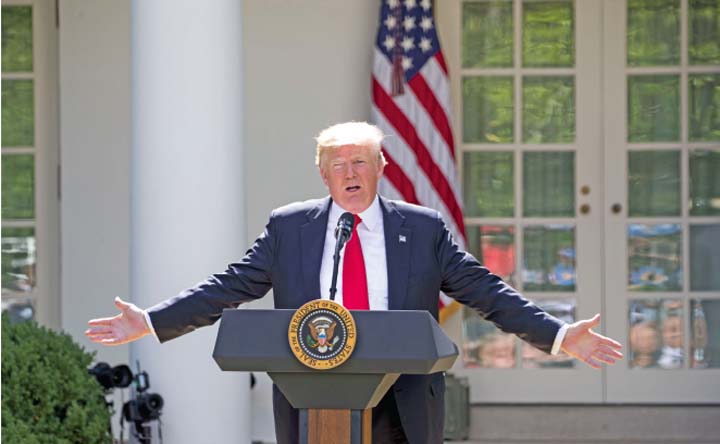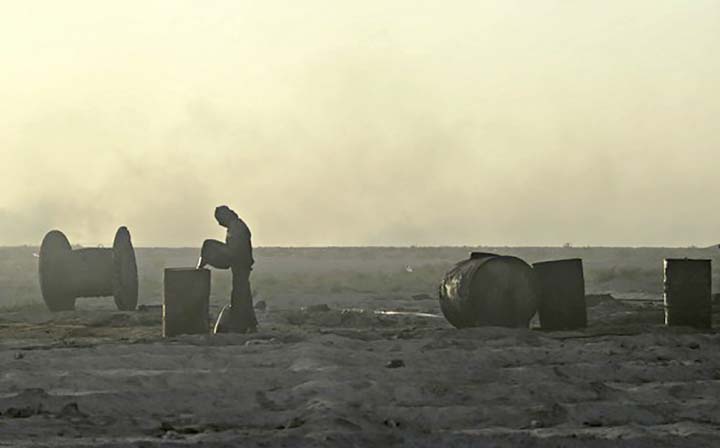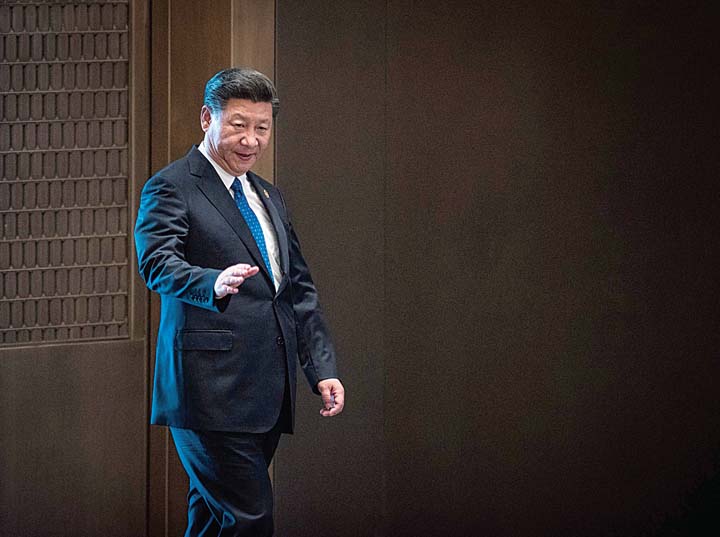Two years ago the world pledged to keep global warming “well below” 2°C hotter than pre-industrial times. Climate scientists and campaigners purred. Politicians patted themselves on the back. Despite the Paris agreement’s ambiguities and some setbacks, including President Donald Trump’s decision to yank America out of the deal, the air of self-congratulation was still apparent this month among those who gathered in Bonn for a follow-up summit.
However, the most damaging thing about America’s renewed spasm of climate-change rejection may not be the effect on its own emissions, which could turn out to be negligible. It is the cover America has given other countries to avoid acknowledging the problems of the agreement America is abandoning.
The Paris agreement assumes, in effect, that the world will find ways to suck CO2 out of the air. That is because, in any realistic scenario, emissions cannot be cut fast enough to keep the total stock of greenhouse gases sufficiently small to limit the rise in temperature successfully.
Nonetheless, there is barely any public discussion of how to bring about the extra “negative emissions” needed to reduce the stock of CO2, and even less about the more radical idea of lowering the temperature by blocking out sunlight. Unless that changes, the promise of limiting the harm of climate change is almost certain to be broken.
Fully 101 of the 116 models the Intergovernmental Panel on Climate Change uses to chart what lies ahead assume that carbon will be taken out of the air in order for the world to have a good chance of meeting the 2°C target. The total amount of CO2 to be soaked up by 2100 could be a staggering 810 billion tons, as much as the world’s economy produces in 20 years at today’s rate. Putting in place carbon-removal plans of this magnitude would be an epic endeavor even if tried-and-tested techniques existed.
They do not. A few power stations and industrial facilities capture CO2 that otherwise would end up in the air and store it underground, a practice known as carbon capture and storage. However, this long-touted approach to cutting emissions still operates on only a very small scale, dealing with only a few tens of millions of tons of CO2 a year. Moreover, such programs lower emissions, but don’t reverse them.
What might? One option is to plant more forests, which act as a carbon sink, or to replace the deep-plowing of fields with shallow tillage, which helps soils absorb and retain more CO2. Another is to apply carbon capture and storage to biomass-burning power plants, stashing the carbon sucked up by crops or trees burnt as fuel.
Carbon could be seized directly from the air, using chemical filters, and stored. Minerals could be ground up and sowed over land or sea, accelerating from eons to years the natural weathering process that binds them to CO2 to form carbonate rocks.
Whether any of these technologies can do the job in time is unknown. All of them are expensive and none is proven in large scale. Persuading Earth’s swelling population to plant an India’s worth of new trees or crops to produce energy, as the climate simulations require, looks highly improbable. Changing agricultural practices would be cheaper, but scientists doubt that this would suck up enough CO2 even to offset the greenhouse gases released by farming.
Direct air capture and enhanced weathering use less land, but both are costlier. Though renewable energy could profitably generate a fair share of the world’s electricity, nobody knows how to get rich simply by removing greenhouse gases.
When the need is great, the science is nascent and commercial incentives are missing, tasks usually fall to government and private foundations. In this case, they are falling short.
More science would serve as a collective insurance policy against a grave threat. However, only this year did Britain become the first country to devote cash to such projects. America is eyeing grants, too, despite Trump. Britain’s one-off $11.3 million is negligible, however. Roughly $15 billion a year goes to all research into low-carbon technologies—a number that needs to increase, with more of it channeled to extracting carbon.
A big market for CO2 would provide an extra incentive to mine it from the atmosphere, but its uses still are limited. If regulators forced industries that cannot convert to electricity, such as aviation, to use synthetic fuels rather than fossil ones, demand for the CO2 that is the raw material for those fuels could increase greatly. The industries, though, would resist.
If the market will not provide an incentive, governments could. The case for a substantial price on carbon is strong. Its absence is one of the reasons carbon capture and storage has not taken off as a way of reducing emissions from fossil-fuel plants, because the equipment needed can double the price of electricity. However, setting a carbon price high enough to encourage negative emissions would asphyxiate the economy.
Subsidies are another option. Without them, renewables would have taken longer to compete with fossil fuels.
© 2017 Economist Newspaper Ltd., London (November 18). All rights reserved. Reprinted with permission.
Image credits: Doug Mills/The New York Times

































2 comments
Trying to reduce carbon by expensive carbon capture seems to be leading the cart before the horse. What needs to be done is to either start the Cap & Dividend program or revoke the business licenses of the top 100 emitters of CO2.
The scheme described in the article is fantasy, because of the preposterous scale of CO2 removal that would be necessary (by 2100, “20 years” of global CO2 emissions “at today’s rate”). We are too late to experiment with a a fee and dividend program, because being revenue-neutral it will be difficult to avoid being emissions neutral as the economy adjusts to the carbon fee schedule. So, it is time to begin considering rationing fossil fuels, with a cap declining to zero over about 2 decades. In the meantime, renewable energy production will increase. We know how to ration fairly and with low prices; several nations did so successfully during WW-II. We have delayed so long on reducing emissions that this now needs to be on the table.